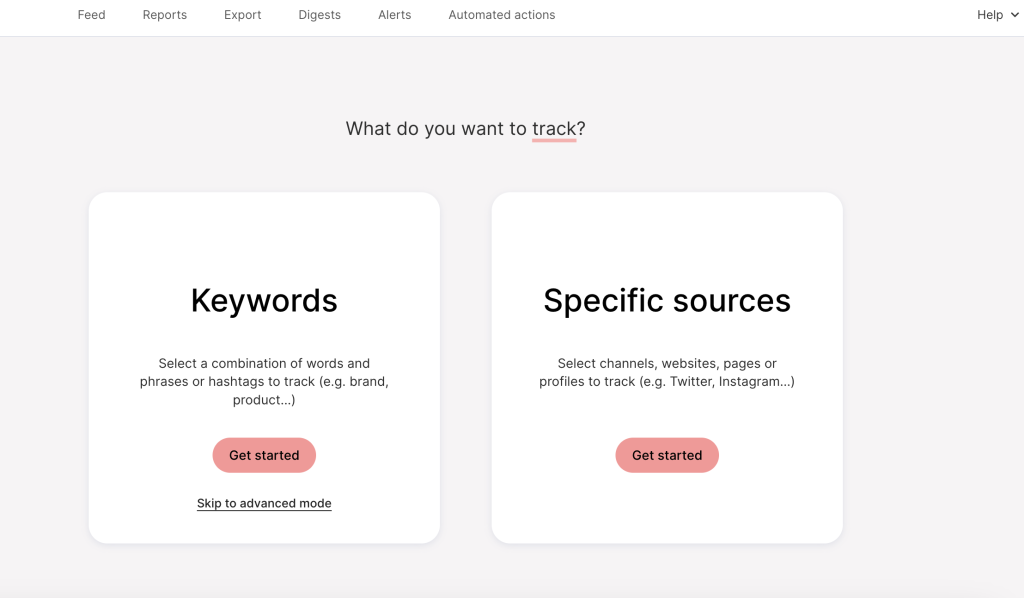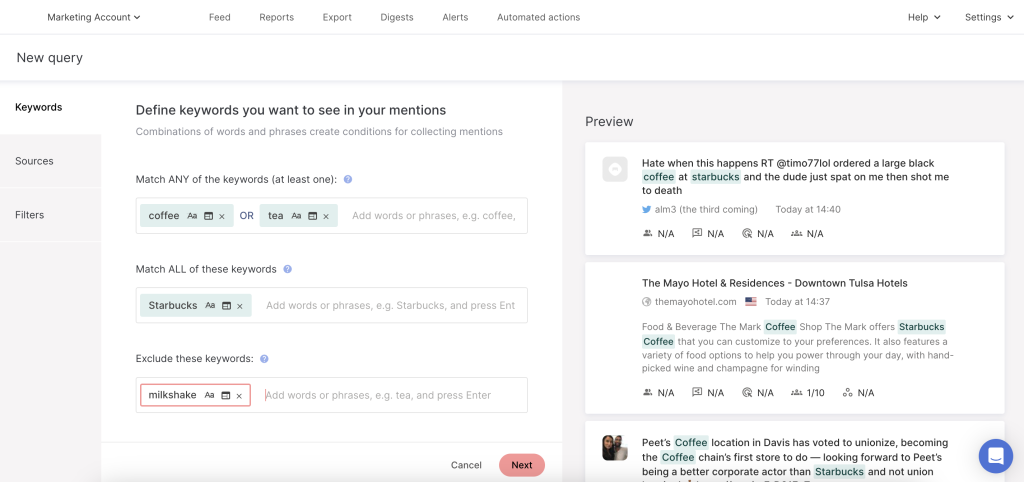Today, an online presence is a necessity for any business. But, as much as the Internet can help a brand, it can also do some serious damage. Negative reviews, fake information, unfair assumptions; all can cause a reputation crisis.
? Read Digital PR Explained: Best Strategies and Tools
That’s where PR clipping and media monitoring come in. They can help protect your business reputation and manage your brand’s image.
Explore this method of analysis in this article and find out how to apply it to your business.
PR Clipping: What is it?
PR clipping is a method of analyzing the effectiveness of public relations activities. As the name suggests, it consists of collecting media mentions (or clips) about your brand.
You can use this method to determine how many times your brand has been mentioned in print, broadcast, or online media. Most importantly, you can get clippings in real-time and share them as they appear.
Why is PR Clipping Important?
The practice of PR clipping is essential for public relations strategies and marketing campaigns since it allows businesses to evaluate their efforts, measure results, and determine overall effectiveness.
In addition, PR clipping can be used to keep track of an organization’s online presence, visibility, and reputation. So why is it worth digging deeper into this topic?
PR clipping helps you as a business in the following ways:
1. Stay informed
PR clipping gathers data from multiple sources online and presents it to you in one place. Consequently, you can keep track of all the mentions of your brand and always know what’s going on to react quickly.
2. Understand the customers’ perception of your brand
PR clipping will let you know what people are saying about your brand. By doing so, you will be able to understand your customers’ thoughts and needs better.
3. Manage your brand reputation more effectively
When you track PR clippings, you can respond promptly to discussions, reviews, or queries. Not only does it demonstrate your concern for your customers, but it also builds loyalty and trust.
4. Detect any unfavorable mentions
Using PR clipping makes it much easier to identify any negative mentions and react quickly, to prevent a more significant crisis from occurring.
5. Take future decisions
Using PR clipping, you can collect data from all over the web to make better future decisions based on these insights.
6. Improve
Analyzing PR clippings can help you spot gaps for change and improve your communication strategies.
How to Get the Most out of PR Clippings
From the above, you can see that PR clipping is not only helpful for agencies to demonstrate their value to clients, but also for businesses to control their reputations, build brand awareness, or track their marketing initiatives.
There is one more plus – PR clippings can be reused for your own marketing purposes. The use of great clippings on your website and social media channels can create a buzz and boost your credibility.
There’s no doubt that this tool can benefit your business. So if you want to start, what should you do next?
What is the Best Way to Make PR Clippings?
PR clipping makes no sense when you do it manually, especially online. On top of that, it’s almost impossible. Can you imagine checking Google results one by one? We can’t either.
It would take too much time, and it would be never-ending since new mentions would appear all the time. As well as the search results, there are also many social media platforms that you would potentially need to check.
This is a daunting task, so you’ll be happy to know that you can automate it without much effort. When you want to introduce PR clipping into your regular analysis strategy, you should take a closer look into a dedicated service that automatically detects any mentions and tracks them in real-time – a media monitoring tool.
Step 1: Find a monitoring tool
Finding a tool that can help you in this matter should be your first step. It is not worth investing your time and money into an application that is too complex to master quickly and has such a complicated interface that you would probably need to be a programmer to use it.
Here is a quick must-have list of features that such a tool should have to provide you with seamless work with PR clipping:
- Availability of a free trial – You don’t want to buy a pig in a poke, so you should be able to test the tool before investing.
- Sentiment detection – It helps a lot when the tool provides a feature to automatically detect the sentiment of mentions. Using this option, you can see whether mentions are positive, neutral, or negative allowing you to manage them more efficiently in a shorter time frame.
- Real-time notifications – You should have the ability to receive notifications in real-time when something happens so that if somebody mentions your brand negatively, you will be notified instantly and be able to take action.
- Ready-made reports – A good monitoring tool should offer ready-made reports that you can generate with a few clicks and provide all relevant data. Ideally, you should be able to tweak them to better suit your needs and download them in popular formats.
Step 2: Set up your first monitoring query
When you’ve chosen a monitoring tool you’d like to use, you’ll need to set up the first keyword (or list of keywords) that the tool will track for you. With the Determ example, we will illustrate how this works.
In the beginning, you have to enter the keywords that you want to monitor. The keywords can be related to your company name, your competitors, your industry, a product you offer, or an advertising campaign you’re currently running.

Step 3: Track the results
All the mentions of your keywords will now be automatically collected by the tool. The only thing you need to do is visit the tool regularly and browse the results.

In Determ, you can filter the results by language, location, sentiment, author, or influence score. The last metric is especially useful in PR clipping since you can view the mentions that are especially significant and worth concentrating on in the first place.
Additionally, you can select only the sources you want to monitor. Determ covers platforms such as Twitter, Facebook, Instagram, YouTube, Reddit, Tripadvisor, and websites, comments, and forums.
Step 4: Configure an alert
Some media monitoring tools allow you to receive real-time notifications as soon as something happens. It’s especially helpful when you want to react quickly. In this case; daily summaries may not be sufficient.
This setup can be done quickly in Determ. You can get notifications by email, mobile app, or even Slack. There is also an option to create custom alerts as well.

Step 5: Create the report
The final step of PR clipping is to create a report that helps you analyze all mentions. Although this step is not mandatory, it will help you better understand your performance and streamline your work. Data is presented on graphs, which allows you to make more informed decisions.
Determ offers comprehensive reports, which can be basic or advanced, or you can also choose to generate a competitive analysis. Moreover, all of these reports can be downloaded in PDF or .PPT format with just one click.

Determ also has a feature that allows you to create branded reports. You can upload your company’s logo, change the background color, add a glossary, choose its placement, and change many other options to tailor the report to your needs.
Are there any other tools that can help with PR clipping?
As discussed above, media monitoring tools provide the best results when it comes to PR clipping. In addition, dedicated tools like these offer much more benefits than other solutions because they are specifically designed for this purpose.
Nevertheless, there are other solutions that you can choose from. But, of course, choosing what’s suitable for you depends on what you need, so we’re going to show you some alternatives as well.
Google Alerts
PR clipping services can be accessed through Google Alerts. It’s a free tool that gives you the ability to do basic research; add keywords and filter the results. However, it offers limited keyword tracking and doesn’t provide complex features.
Google News
You can also perform a quick search on Google News. This will provide you with recent media coverage of your brand. Still, it’s important to note that this tool identifies mentions only from Google’s listed sites.
Putting it all together
PR clipping and media monitoring should be an integral part of the decision-making process to evaluate the effectiveness of your brand’s marketing efforts.
Over 80% of retail shoppers conduct online research before making a purchase. Even a single negative comment can deter a potential customer from taking action.
Ensure that you use a PR clipping tool and keep monitoring online mentions, so you don’t miss anything that could have an important impact on your brand’s reputation.



